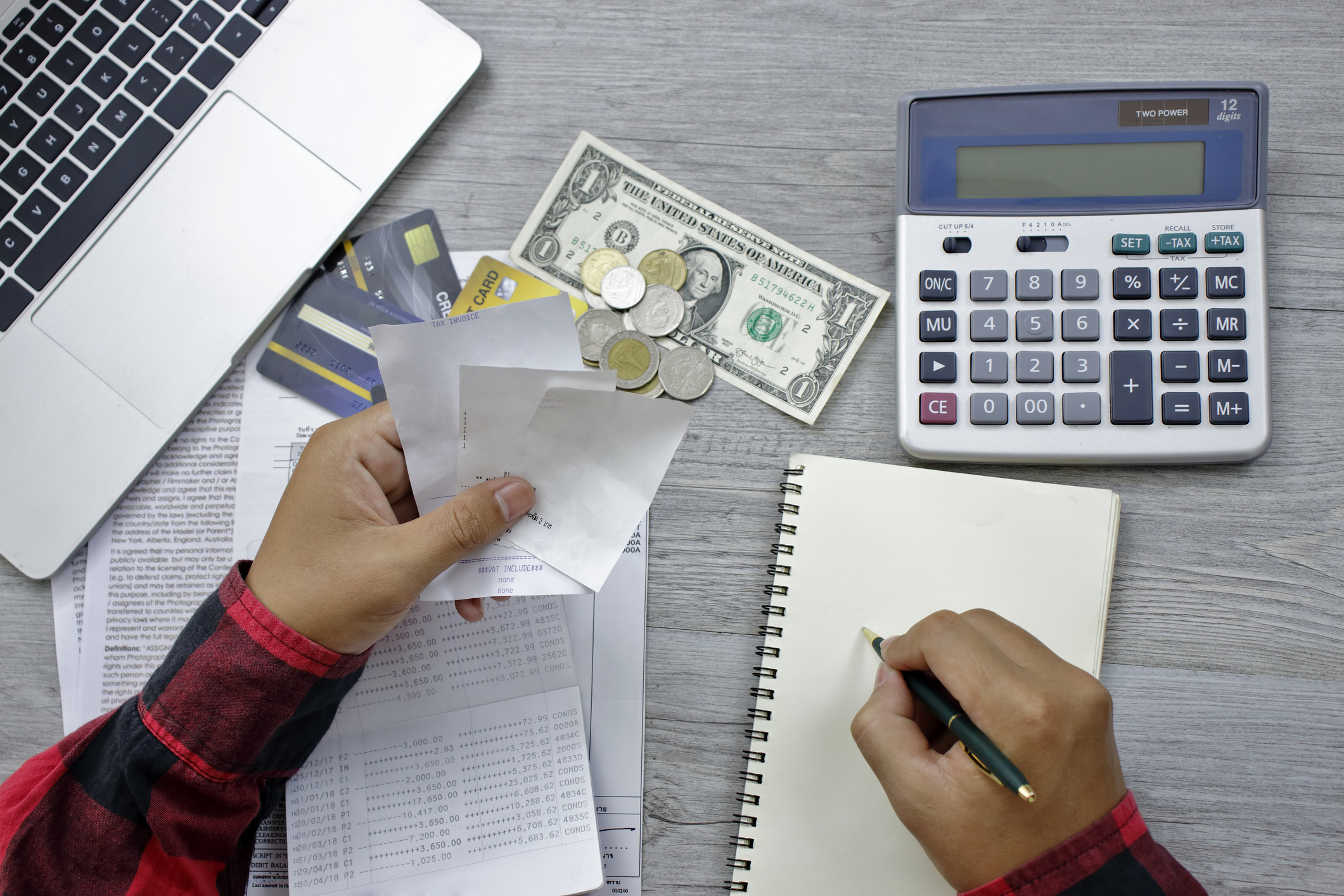How Do You Pay off Credit Card Debt?
You can pay off credit card debt and keep up with credit card bills using these tried-and-true strategies.

If you struggle to pay off credit card debt, you are not alone. Credit card debt hit $1.12 Trillion in the first quarter of 2024. And inflation paired with higher interest rates may further complicate your efforts to avoid credit card debt.
After years of pandemic-related restrictions, it's easy to understand the urge to spend more on experiences and make up for lost time. Some of us pay our credit cards in full every month and never carry a balance. However, that’s not the case for everyone, especially millennials and older adults. If you’re carrying credit card debt, consider these strategies to eliminate or reduce what you owe — before it’s too late.
Know your credit score
To pay off credit card debt, start with your credit score to assess your options. Checking your credit score will not damage your credit.

Sign up for Kiplinger’s Free E-Newsletters
Profit and prosper with the best of expert advice on investing, taxes, retirement, personal finance and more - straight to your e-mail.
Profit and prosper with the best of expert advice - straight to your e-mail.
There are more ways to check your credit score for free than ever before. In addition, your bank or credit card company may give you a monthly credit score (called FICO or Vantage) free from one of the three credit bureaus (Experian, Transunion and Equifax.
If lenders consider you a good credit risk, you will have more options than if you have bad credit. Be sure to understand what makes up a good credit score; lenders generally consider FICO scores under 580 as “bad” and under 670 as “fair.”
A credit score is different from a credit report, which gives a general overview of your accounts, whether they are in good standing and your personal information.
Take stock of your debt
If you have balances on multiple credit cards, make a list that shows how much you owe on each, its interest rate, and the minimum monthly payment for each. A spreadsheet provides a handy way to update your progress, but pen and paper work just as well.
Balance transfer cards for good credit scores
If you have a good credit score, a balance transfer could help you get out from under your debt. Many banks offer balance transfer credit cards for new customers. These cards often come with an introductory 0% annual percentage rate (APR) for a limited time — anywhere from 12 to 21 months, depending on the card.
There are three pitfalls to avoid when using balance-transfer cards.
First, be sure to pay off the balance before the introductory rate expires to avoid sliding again into debt. And resist the temptation to use the balance-transfer card to make new purchases, says Beverly Harzog, credit expert and author of Confessions of a Credit Junkie. You want to use the card to get out of debt, not add to it, she says.
Second, pay attention to the balance transfer fee, usually between 3% - 5%. If you are transferring $10,000, you might pay up to $500 in fees. The best rate is typically 3%.
Finally, if you cancel your old card and your new balance-transfer card has a lower credit limit, it could affect your credit utilization ratio. This ratio measures how much of your allowed credit you are using on a given card. Racking up too much credit relative to your credit limit could lower your credit score, says Gerri Detweiler, author of The Ultimate Credit Handbook.
Options for poor or bad credit
Suppose your credit score isn’t high enough to meet the criteria for a 0% introductory rate on a balance transfer card. In that case, you may still qualify for a card with an introductory APR that's lower than your current card’s rate, Harzog says. Another option is a debt-consolidation loan from a bank or credit union with a rate lower than the rate you’re paying on your high-interest credit cards.
Strategies to pay off credit card debt
When you have balances on multiple credit cards, there are three approaches you can use to tackle the debt. The first is the avalanche approach. Begin with your cards with the highest interest rates and balances. Make the minimum payments on the lower-interest cards while devoting most of your available funds to paying down high-interest balances.
While the avalanche approach makes the most sense from a mathematical point of view, some people choose the snowball approach, paying off the low-balance debts first. Paying off your low-balance cards may motivate you to pay off all of your debts, even if it costs you more in interest.
Finally, there’s the blizzard approach, in which you start with the snowball and move to the avalanche. Start by paying off one low-balance card so you have one success under your belt, then move on to those with higher rates.
Paying off your balances will make it difficult to save. But try to put aside enough in an emergency fund to cover three months’ worth of expenses. When you’ve paid off your debts, you can ramp up your savings so you’ll be prepared for unexpected expenses, which will reduce the risk of falling back into debt.
Read More
Get Kiplinger Today newsletter — free
Profit and prosper with the best of Kiplinger's advice on investing, taxes, retirement, personal finance and much more. Delivered daily. Enter your email in the box and click Sign Me Up.

Ellen writes and edits retirement stories. She joined Kiplinger in 2021 as an investment and personal finance writer, focusing on retirement, credit cards and related topics. She worked in the mutual fund industry for 15 years as a manager and sustainability analyst at Calvert Investments. She earned a master’s from U.C. Berkeley in international relations and Latin America and a B.A. from Haverford College.
-
 6 Stunning Waterfront Homes for Sale Around the US
6 Stunning Waterfront Homes for Sale Around the USFrom private peninsulas to lakes, bayous and beyond, Kiplinger's "Listed" series brings you another selection of dream homes for sale on the waterfront.
By Charlotte Gorbold Published
-
 Six Reasons to Disinherit Someone and How to Do It
Six Reasons to Disinherit Someone and How to Do ItWhether you're navigating a second marriage, dealing with an estranged relative or leaving your assets to charity, there are reasons to disinherit someone. Here's how.
By Donna LeValley Published
-
 CPI Report Puts the Kibosh on Rate Cuts: What the Experts Are Saying About Inflation
CPI Report Puts the Kibosh on Rate Cuts: What the Experts Are Saying About InflationCPI Consumer price inflation reared its ugly head to start the year, dashing hopes for the Fed to lower borrowing costs anytime soon.
By Dan Burrows Published
-
 Fed Leaves Rates Unchanged: What the Experts Are Saying
Fed Leaves Rates Unchanged: What the Experts Are SayingFederal Reserve As widely expected, the Federal Open Market Committee took a 'wait-and-see' approach toward borrowing costs.
By Dan Burrows Published
-
 CPI Report Keeps the Fed on Track: What the Experts Are Saying About Inflation
CPI Report Keeps the Fed on Track: What the Experts Are Saying About InflationCPI Disinflation in key areas of consumer prices should help the Federal Reserve stick to its policy path of gradual cuts to interest rates.
By Dan Burrows Published
-
 Blowout December Jobs Report Puts Rate Cuts on Ice: What the Experts Are Saying
Blowout December Jobs Report Puts Rate Cuts on Ice: What the Experts Are SayingJobs Report The strongest surge in hiring since March keeps the Fed on hold for now.
By Dan Burrows Published
-
 Fed Sees Fewer Rate Cuts in 2025: What the Experts Are Saying
Fed Sees Fewer Rate Cuts in 2025: What the Experts Are SayingFederal Reserve The Federal Reserve cut interest rates as expected, but the future path of borrowing costs became more opaque.
By Dan Burrows Published
-
 CPI Report Casts Doubt on Rate Cuts in 2025: What the Experts Are Saying About Inflation
CPI Report Casts Doubt on Rate Cuts in 2025: What the Experts Are Saying About InflationCPI November Consumer Price Index data sealed the deal for a December rate cut, but the outlook for next year is less certain.
By Dan Burrows Published
-
 Rebound in Jobs Growth Keeps Fed on Track: What the Experts Are Saying
Rebound in Jobs Growth Keeps Fed on Track: What the Experts Are SayingJobs Report No nasty surprises in the November payrolls data leaves a quarter-point cut in play.
By Dan Burrows Published
-
 October CPI Report Hits the Mark: What the Experts Are Saying About Inflation
October CPI Report Hits the Mark: What the Experts Are Saying About InflationCPI While the current pace of rising prices appears to have leveled off, the expected path of rate cuts has become less certain.
By Dan Burrows Published
